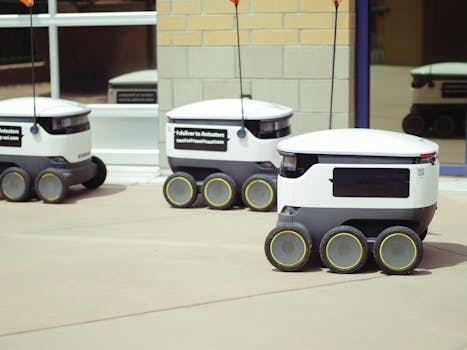
Smart Cities: Urban Trends for 2025 – Revolutionizing the Future
Smart Cities, the concept of creating urban areas that are more efficient, sustainable, and livable, has been gaining momentum in recent years. As we approach 2025, it’s essential to explore the latest trends and innovations that are transforming the way we live, work, and interact with our cities. In this article, we’ll delve into the world of smart cities and examine the urban trends that will shape the future of city living.
Introduction to Smart Cities

Smart cities leverage technology, data analytics, and innovative design to create more sustainable, efficient, and responsive urban environments. The goal is to improve the quality of life for citizens, enhance economic growth, and reduce the environmental impact of urbanization. From smart transportation systems to energy-efficient buildings, smart cities are redefining the way we experience urban living.
Urban Trends for 2025

So, what can we expect from smart cities in 2025? Here are some of the top urban trends that will shape the future of city living:
- Sustainable Infrastructure: Cities will focus on developing green infrastructure, such as parks, green roofs, and urban forests, to mitigate the urban heat island effect and improve air quality.
- Smart Transportation Systems: Electric and self-driving vehicles will become increasingly prevalent, reducing congestion, emissions, and accidents. Smart traffic management systems will optimize traffic flow, reducing commute times and improving air quality.
- Energy Efficiency: Buildings will be designed with energy efficiency in mind, incorporating features such as solar panels, green roofs, and advanced insulation. Smart grids will optimize energy distribution, reducing energy waste and promoting renewable energy sources.
- Waste Management: Cities will adopt innovative waste management systems, including recycling programs, composting, and waste-to-energy conversion. This will reduce waste disposal costs, minimize landfill waste, and create new revenue streams.
- Public Safety: Smart cities will leverage advanced surveillance systems, data analytics, and emergency response systems to enhance public safety, reducing crime rates and improving emergency response times.
Case Studies: Smart City Success Stories

Several cities around the world are already embracing smart city technologies and achieving remarkable results. Here are a few examples:
- Barcelona, Spain: Barcelona’s smart city initiative has implemented a range of innovative solutions, including smart lighting, waste management, and transportation systems. The city has reduced energy consumption by 25% and increased citizen engagement through mobile apps and participatory budgeting.
- Copenhagen, Denmark: Copenhagen’s carbon neutrality goal has driven the development of a range of smart city initiatives, including district heating, biomass energy, and electric vehicle charging stations. The city aims to be carbon neutral by 2025.
- Singapore: Singapore’s Smart Nation initiative has implemented a range of innovative solutions, including a national digital identity system, smart transportation systems, and a smart Sensor platform. The city-state aims to create a more livable, sustainable, and competitive economy.
Conclusion

Smart cities are revolutionizing the way we live, work, and interact with our urban environments. As we approach 2025, it’s essential to stay informed about the latest trends and innovations shaping the future of city living. By embracing sustainable infrastructure, smart transportation systems, energy efficiency, waste management, and public safety, cities can create more livable, sustainable, and responsive environments for citizens. Join the conversation and discover how smart cities are transforming the urban landscape.





